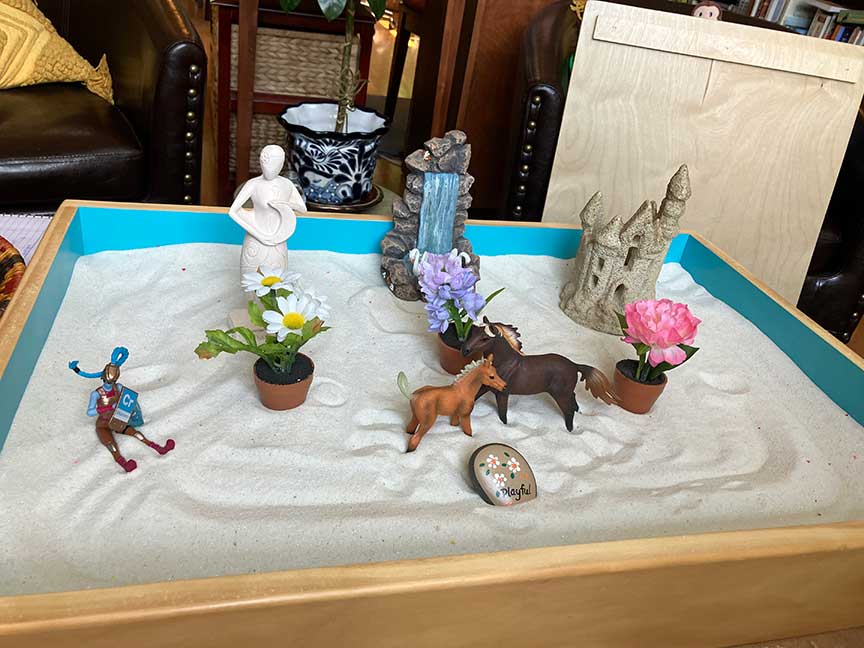Sand tray therapy is a powerful and creative therapeutic technique that involves using a specially designed tray filled with sand and a wide variety of miniature figurines, objects, and toys that clients can use to create symbolic landscapes and scenes. The therapist provides a safe, non-verbal space for clients to externalize their inner experiences, emotions, and conflicts through three-dimensional storytelling and world-building.
During a typical sand tray therapy session, the client is invited to freely choose from an extensive collection of miniatures and arrange them in the sand tray as they feel guided. These objects might include human and animal figurines, natural elements like trees and rocks, architectural structures, vehicles, fantasy creatures, and symbolic representations. The process of creating these sand scenes is intentionally unstructured, allowing clients to express themselves spontaneously and unconsciously. As they build their landscape, hidden psychological dynamics, unresolved traumas, relationship patterns, and internal struggles can emerge in a tangible, visual format.
After the scene is complete, the therapist might invite the client to describe their creation, exploring the meanings behind their choices and the relationships between different elements. This reflective dialogue can provide profound insights into the client’s emotional world, helping them process complex feelings, work through traumatic experiences, and develop greater self-understanding.
The non-verbal nature of the technique allows for emotional expression that transcends language barriers. It can be especially helpful in addressing issues like anxiety, depression, grief, family dynamics, and post-traumatic stress. By providing a metaphorical and safe distance from direct verbal discussion, sand tray therapy enables clients to externalize and explore challenging psychological material in a gentle, supportive manner.

